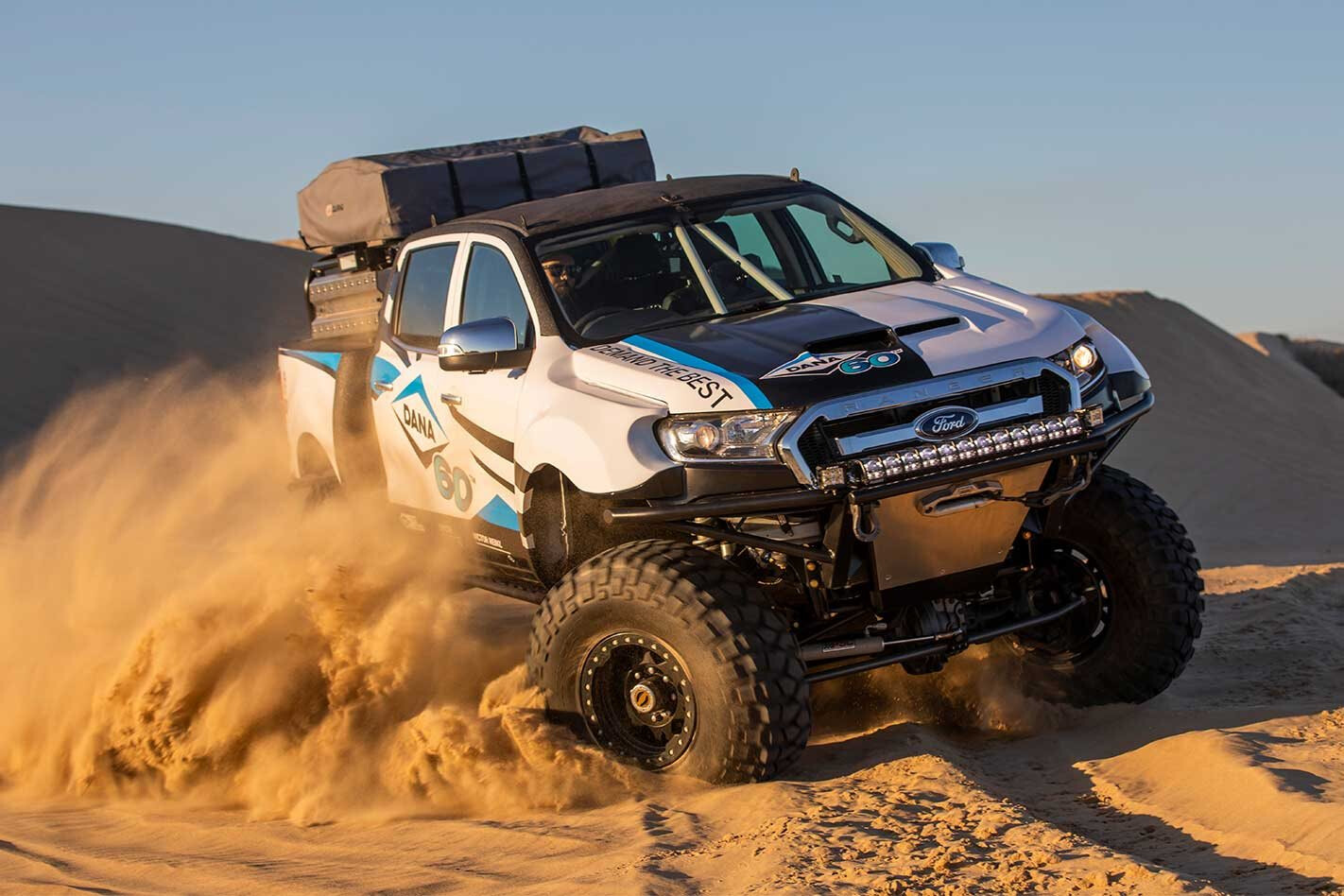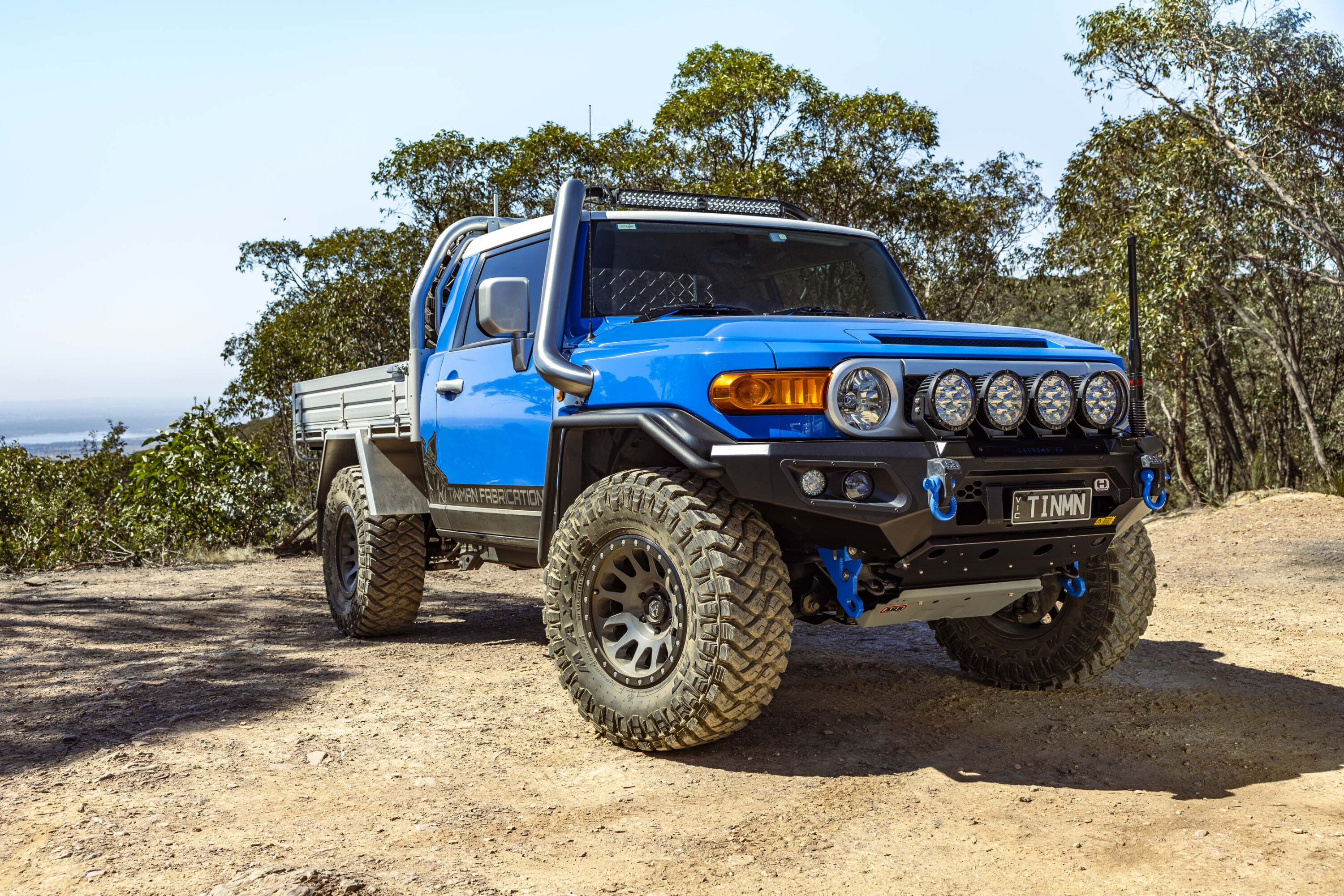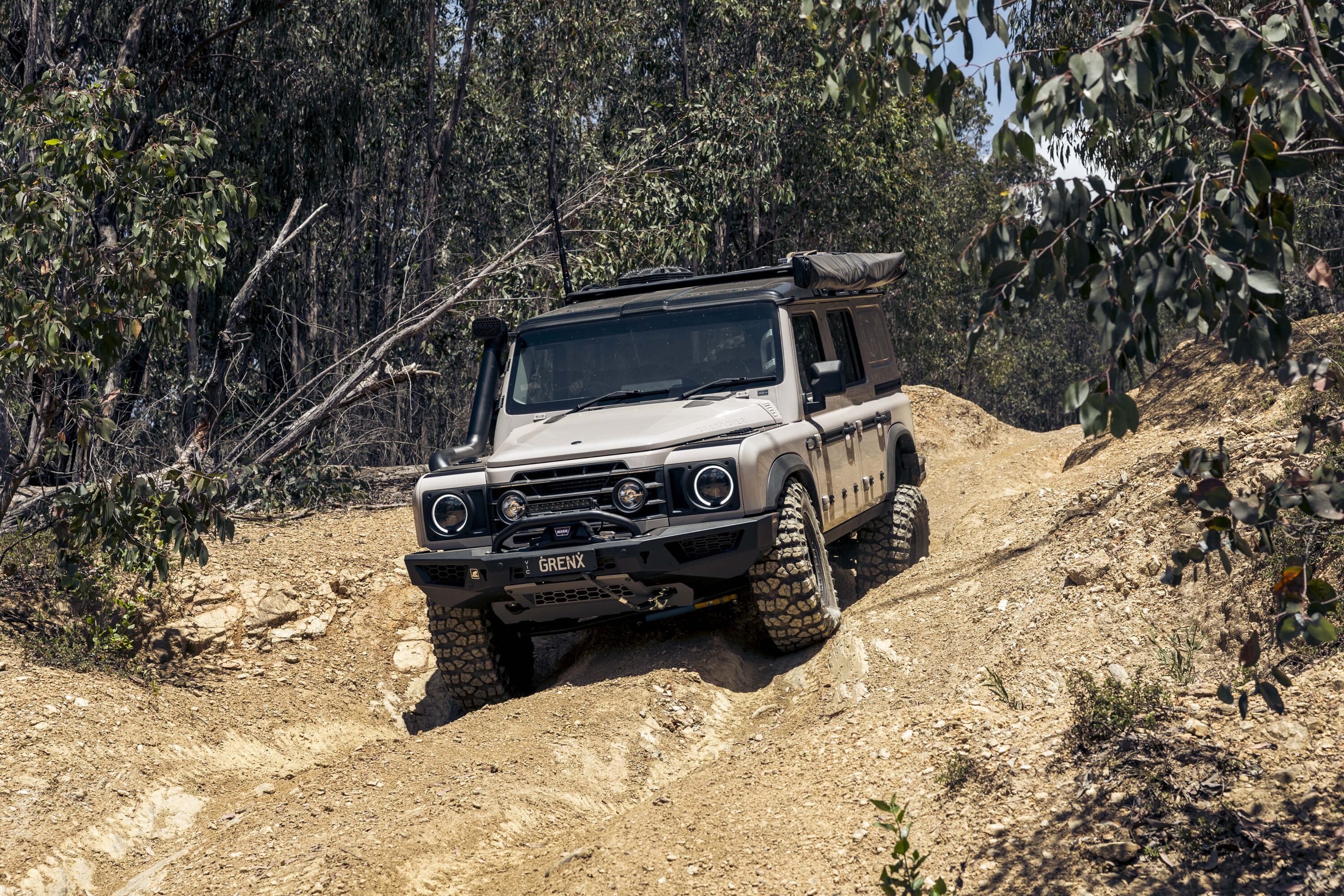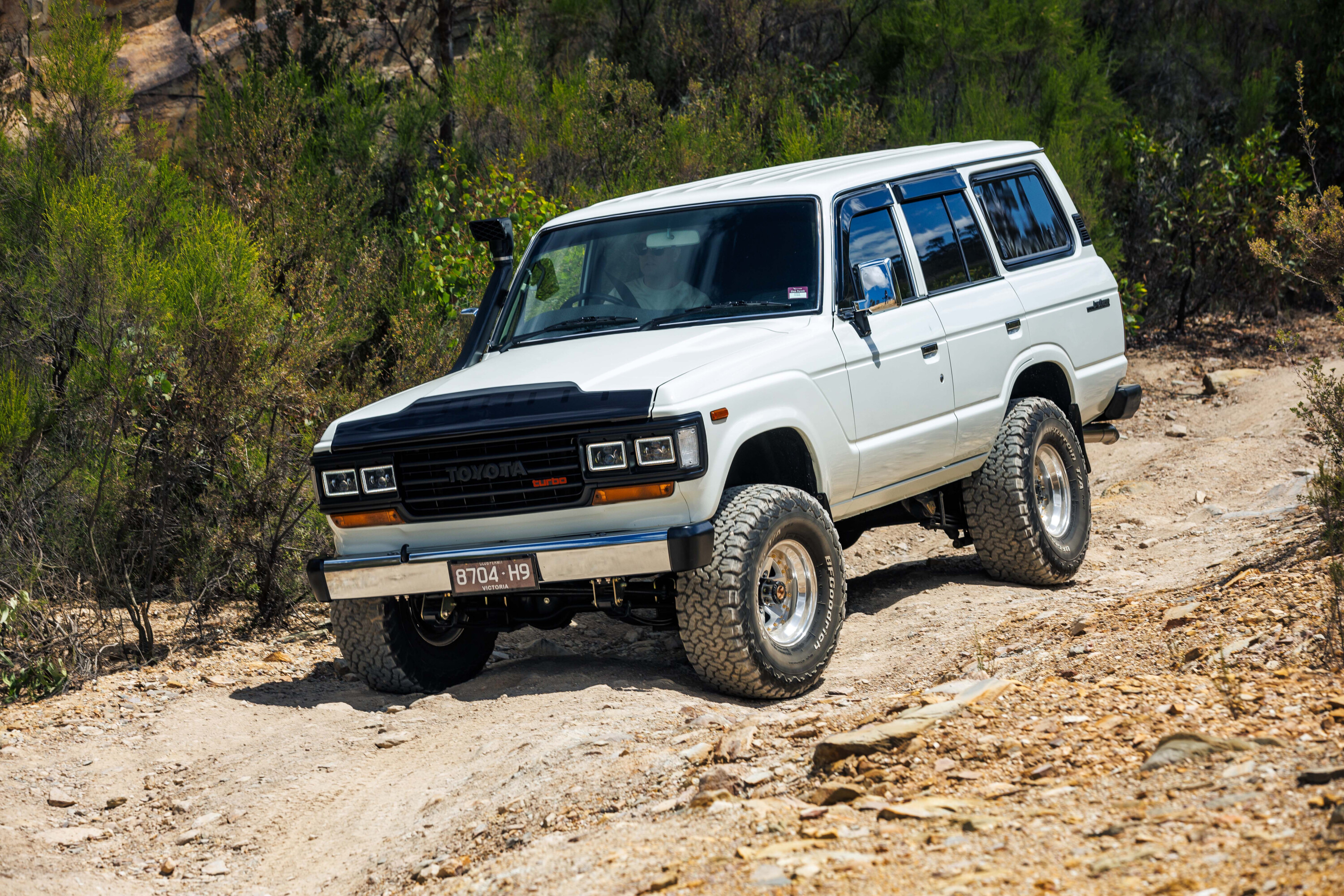IMAGINE just for one moment there was no such thing as a defect: no engineering. no mod plates, no perilous drives on long weekends waiting for the local constabulary to light up your mirrors with their blue and red party lights.
What would you build? A big block beast? A touring rig with a GVM rivalling a Mack Truck? Maybe you’d gut a late model dual cab and turn it into a street-driven rock crawler to end all rock crawlers. Now imagine you’re Ford America, or axle gurus Dana, or Dirt Cinema, and that the chequebook is blank.
It’s this very position a tightknit group of marketing gurus and gear heads found themselves in as they rolled a righ-hand drive PXII Ford Ranger out of a container on the California dock, intent on building a show rig that’d not only show their capabilities but turn heads all around the world. A special order put in from the Southern Hemisphere to show off the soon-to-be-released Ranger to the USA market.
Ideas flowed, concepts bounced back and forth, and all of it irrelevant because the end product is so wild, so unfathomably modified for Australia that it sets its own benchmark and then completely shatters it.
Let’s cut right to the chase. Underneath this Ranger you won’t find leaf springs, a factory rear locker, or an inkling of an independent front suspension arrangement. Instead, the rails have been sliced and diced back to bare steel before some of the strongest axles on the planet have been slotted into place: Ultimate Dana 60s. They’re a sexy version of the huge diffs found in an F-250 pick-up.

The beefy disc-brake rear end is held in place with a custom 4-link and Panhard bar arrangement. Fully adjustable at both ends, it works in conjunction with huge 2.5-inch body, 14-inch travel Fox coilover shocks to hold the Ranger’s rear end in the air and give it insane amounts of articulation. They’re kept reigned in by a huge torsion bar-style Antirock Sway Bar from Currie Enterprises.
Up front there’s a matching Ultimate Dana 60 stuffed full of ARB Air Locker and held in place with a second set of 12-inch-travel 2.5-inch body Fox coilovers. A set of limit straps stop the big-dollar shocks from overextending, while Fox 2.0-inch hydraulic bump stops help smooth out hard hits in those Pismo dune runs.
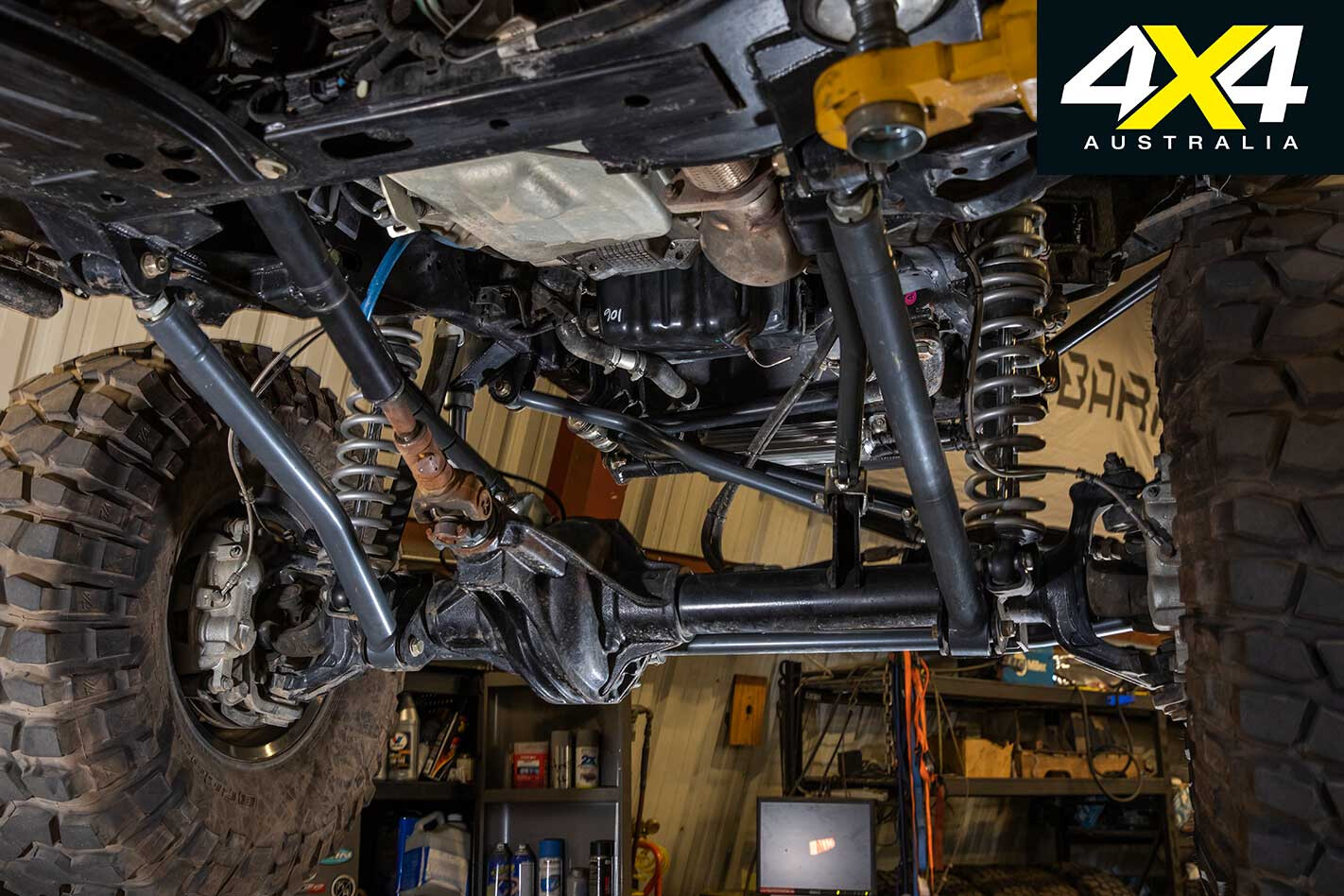
The factory electric steering rack was thrown in the bin, simply not up to the task of muscling around tyres any larger than 35 inches, especially when the terrain turns from sandy beaches to granite boulders.
In its place now sits an hydraulic PSC steering box leading down to a cross-over steering arrangement. A PSC hydraulic ram was added to the tie-rod as an hydraulic assist setup, helping muscle the big shoes around the rocks with minimal effort; the extra volume and an additional steering cooler help keep oil temps in check.
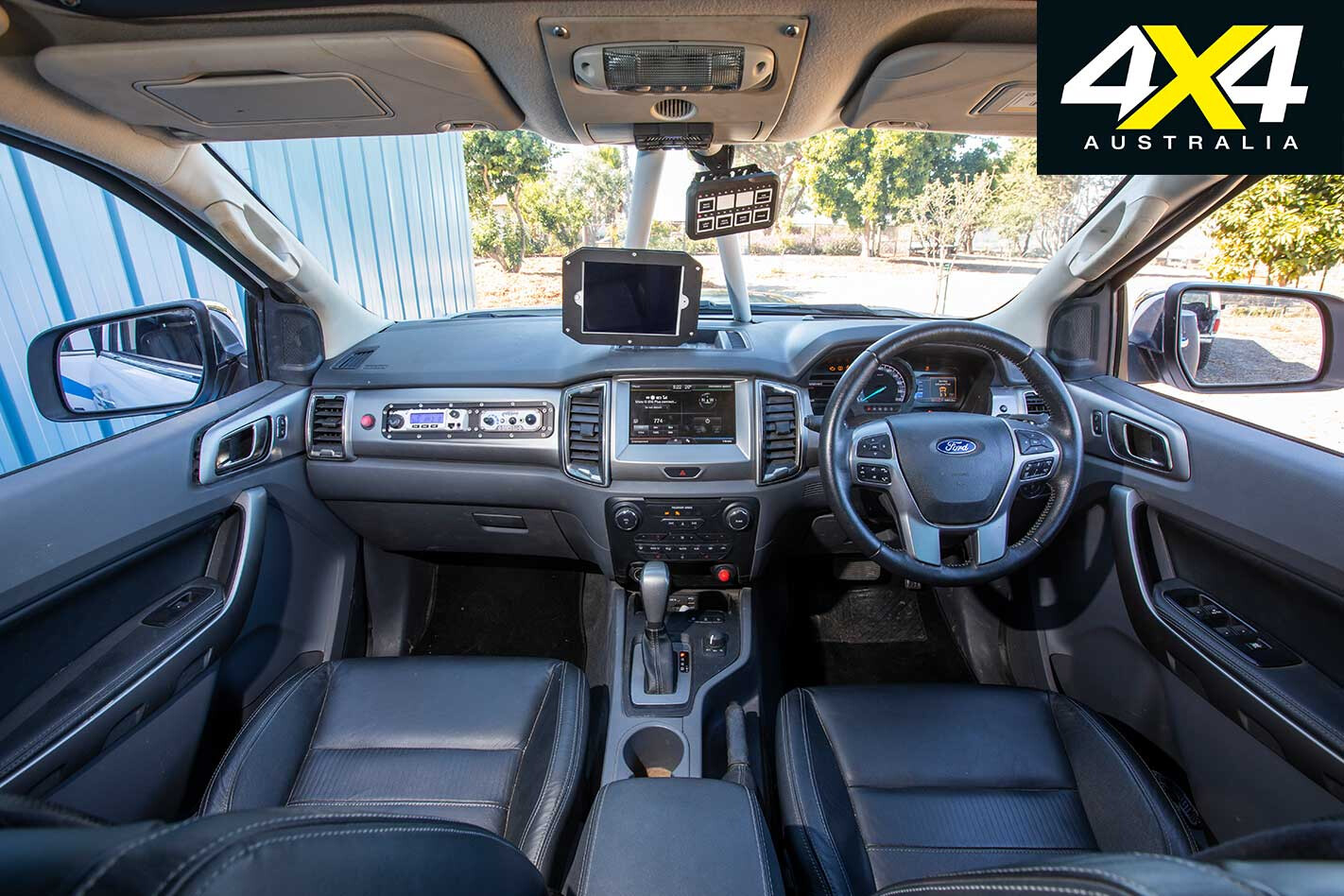
Now let’s be real for a second: You don’t stuff rock crawler-spec suspension into something late model then fit a set of 32-inch all-terrains. For this build a set of massive 39-inch BFGoodrich Krawler tyres were optioned up.
Only available through motorsport retailers in Australia, the tyre has legitimate racing pedigree, being a front runner in the notorious King of The Hammers. They’re stretched around 17-inch 103 Xtreme alloys from Ultra Wheel. The beadlock design means pressures can be safely dropped to single digits without risking a bead coming off, and they look oh-so-cool in the process.
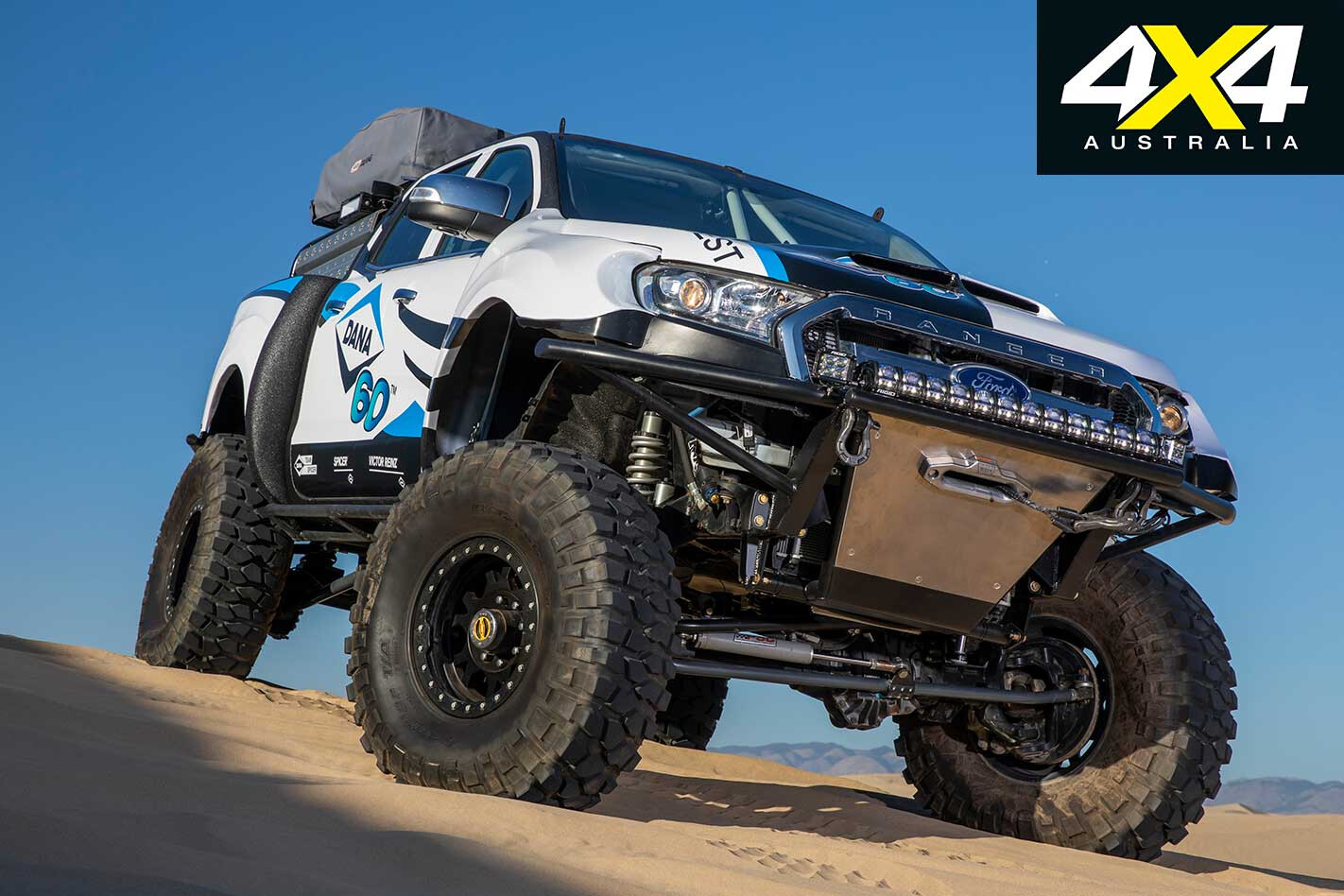
Those monster axles and even bigger tyres mean the Ranger dwarfs a showroom-fresh model. Up front a pre-runner-style bar sets the new width of the Ranger a full 14 inches wider than stock, that’s seven inches wider again than the new Ranger Raptor.
The front bar not only gives the Ranger its aggressive profile, but also hides a Warn Zeon winch behind its alloy skid plate. Tucked above the bar is one of the most high-tech light bars on the market, the 30-inch Rigid Industries Adapt – as the Ranger picks up speed the LEDs transitions from wide pattern to a spot beam, with eight selectable patterns through the in-car controller.
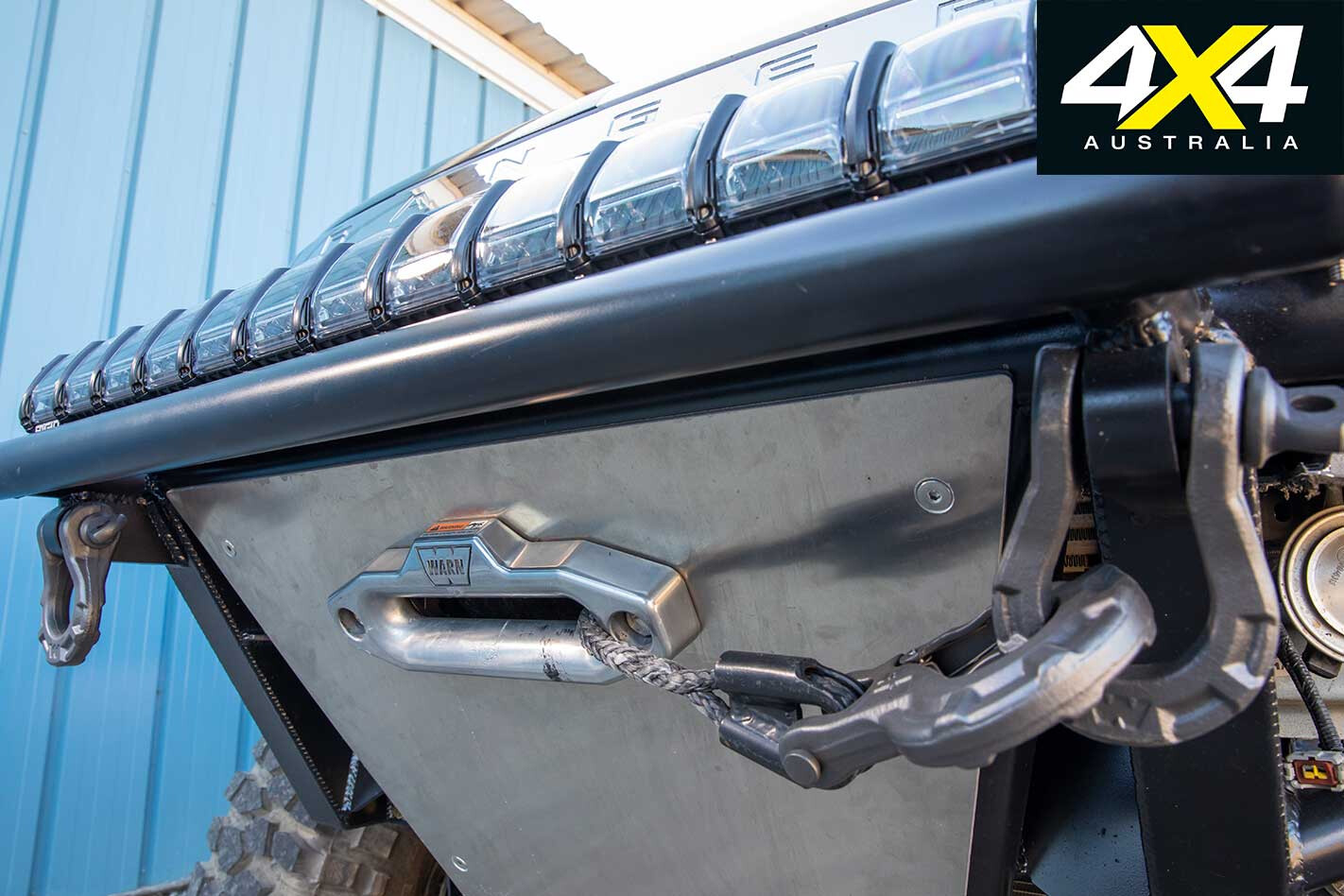
Moving down the flanks is where the party really gets started. The stock flares have been binned, in their place lie a set of one-off fibreglass guards to give that So-Cal pre-runner stance. They’re paired up in the rear with bumped-out-fibreglass tub sides, requiring a reskin of the factory tub. The rear quarter panels have also been sliced and diced to make way for the custom high-clearance tube rear bar. Running along the sills are the always necessary rock sliders.

That masterpiece of metal and fibreglass in the rear isn’t just for hardcore wheeling, either; it’s been decked head to toe with some of the best touring gear on the market. You’d have better luck threading a camel through the eye of a needle than fitting a 39-inch tyre in the stock location, so the crew fired up the MIG welder and pieced together a bed cage to tuck it behind the rear window.
The frame also holds the ARB 12V fridge as well as a pair of quick-release mounts for the Hi-Lift Jack and James Way Off-Road floor jack. There’s an ARB rooftop tent up top, with one side of the rack holding AlumiTrack recovery boards and the other housing the modular RotopaX fuel storage.
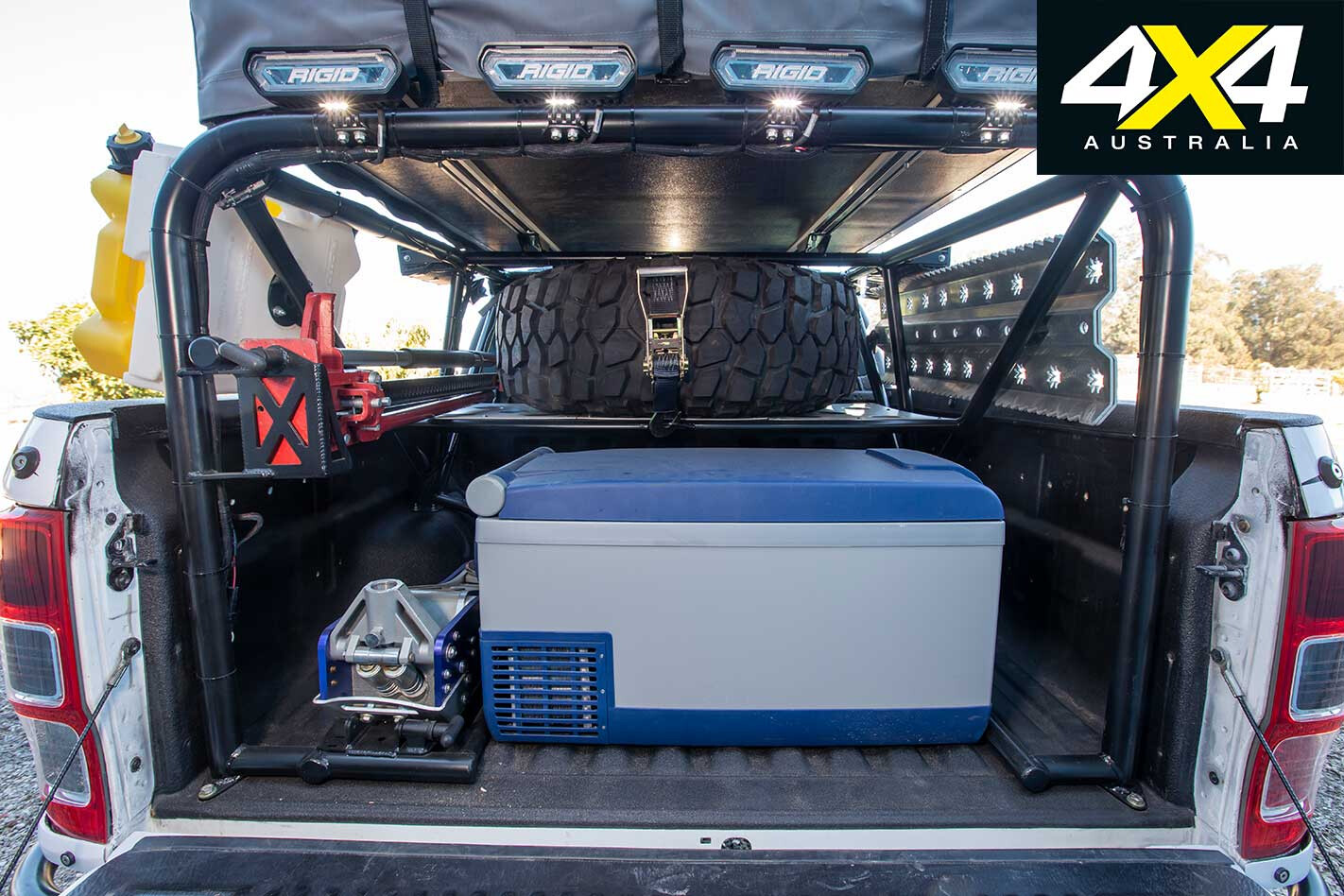
Moving inside and things kick up a gear, well around 100 gears. See those white bars behind the front windscreen? Well, they’re just a hint at the extensive six-point roll cage hidden inside the Ranger, letting the crew open it up in the dunes without turning into pancakes if it all goes south.
There’s a full five-seats inside, so great care was done to keep as much interior room as possible – running the B pillar bars down through the existing B pillar, the halo above the roof liner, and the A pillar bars in behind the OEM trims.
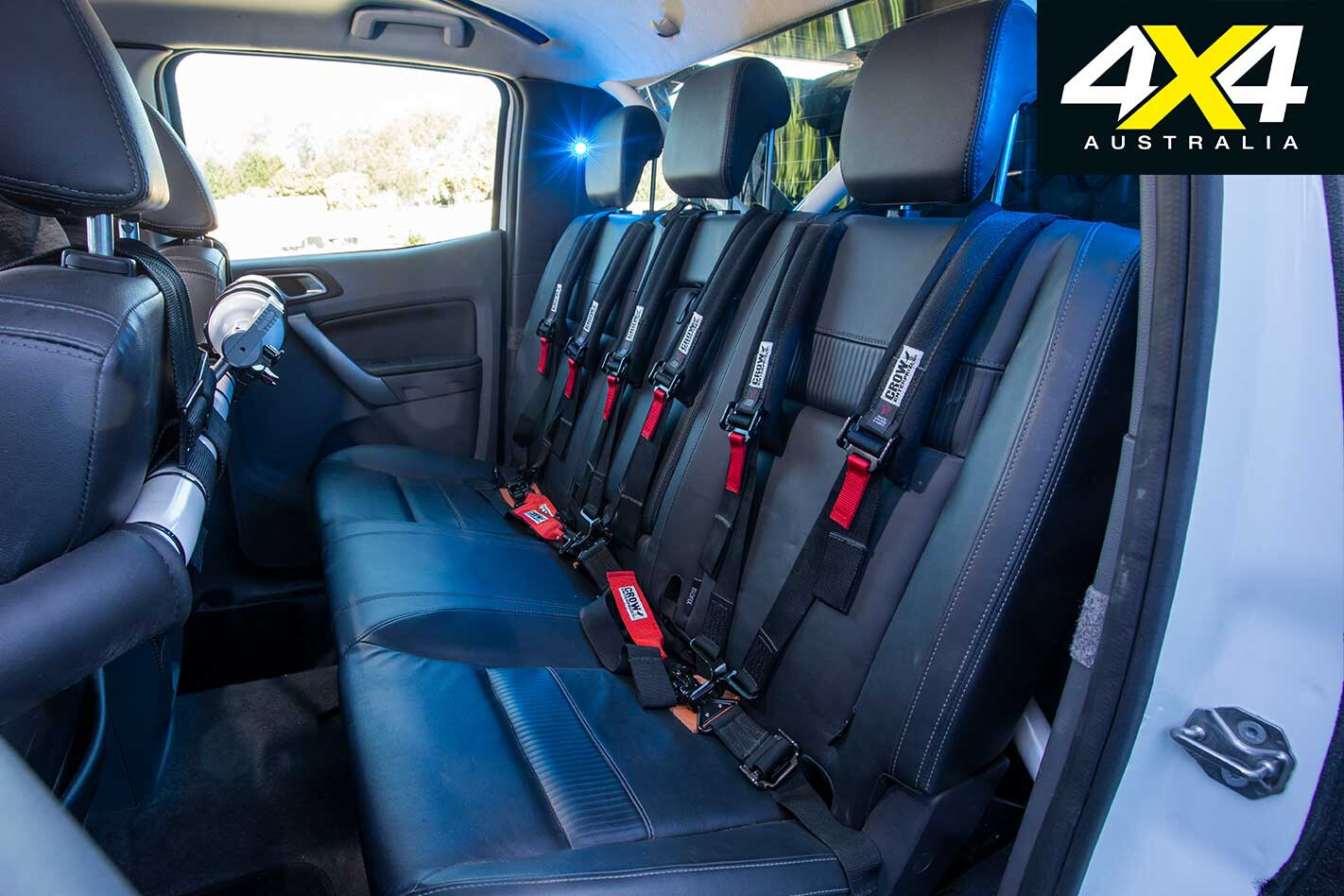
Stock leather-clad seats team up with four-point harnesses to strap everyone in tight. The cage then ties through the back of the cab into the tub rack, and then down through the floor into the rock sliders. There’s a few familiar sights inside, too, including the UHF system (and intercom), dash-mounted GPS and switches to control the extensive lighting and lockers.
While most of the 4x4s we feature focus on how far you can travel with your 4×4, the Dana Ranger focuses on how far you can metaphorically push one. A tight-rope walk between an outlaw rock-crawling build and a capable tourer – attitude to spare, and practicality to boot. There’s no moderation or gentle steps, just the best Ranger you can possibly screw together with some of the best parts in the world.
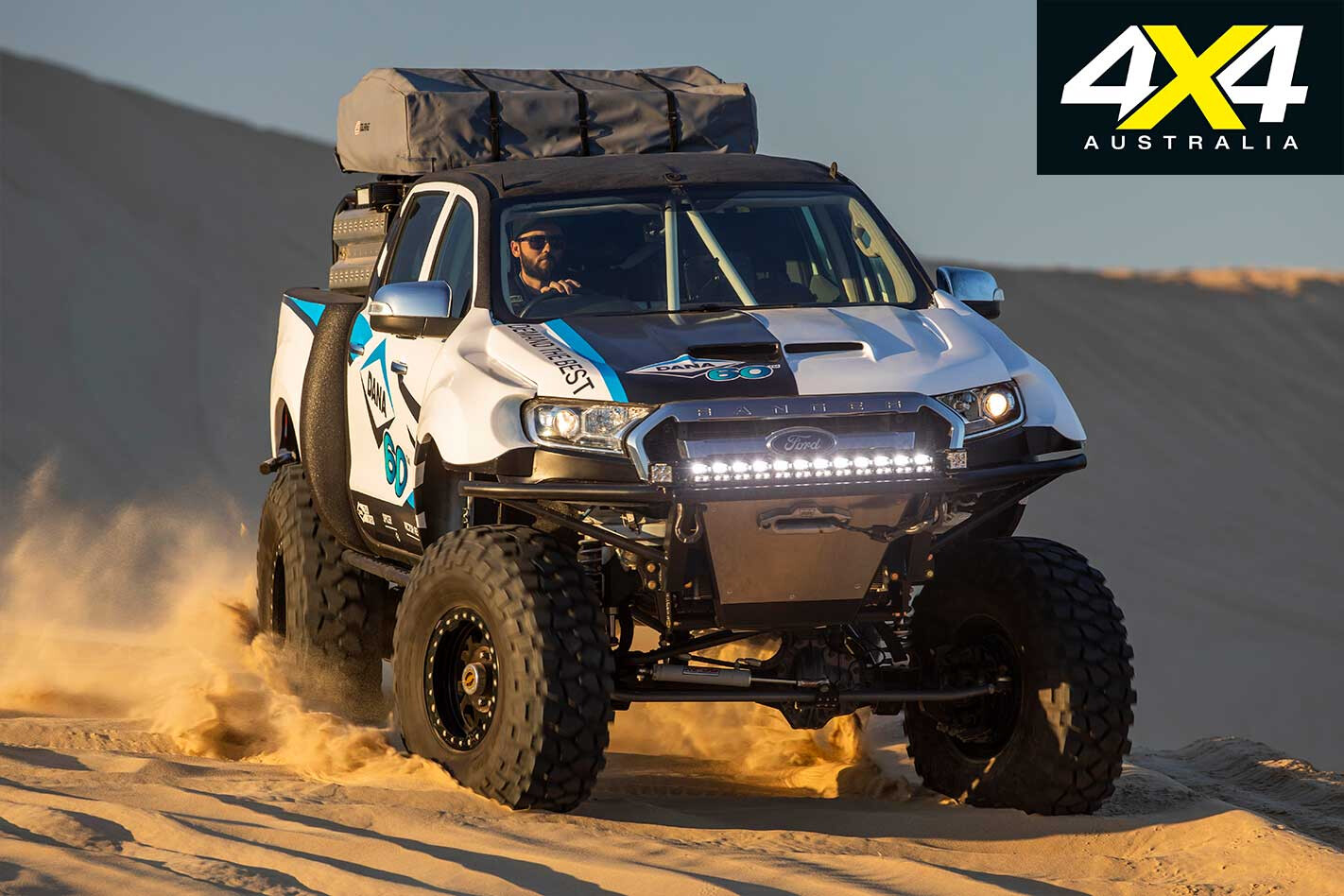
What does it mean for us?
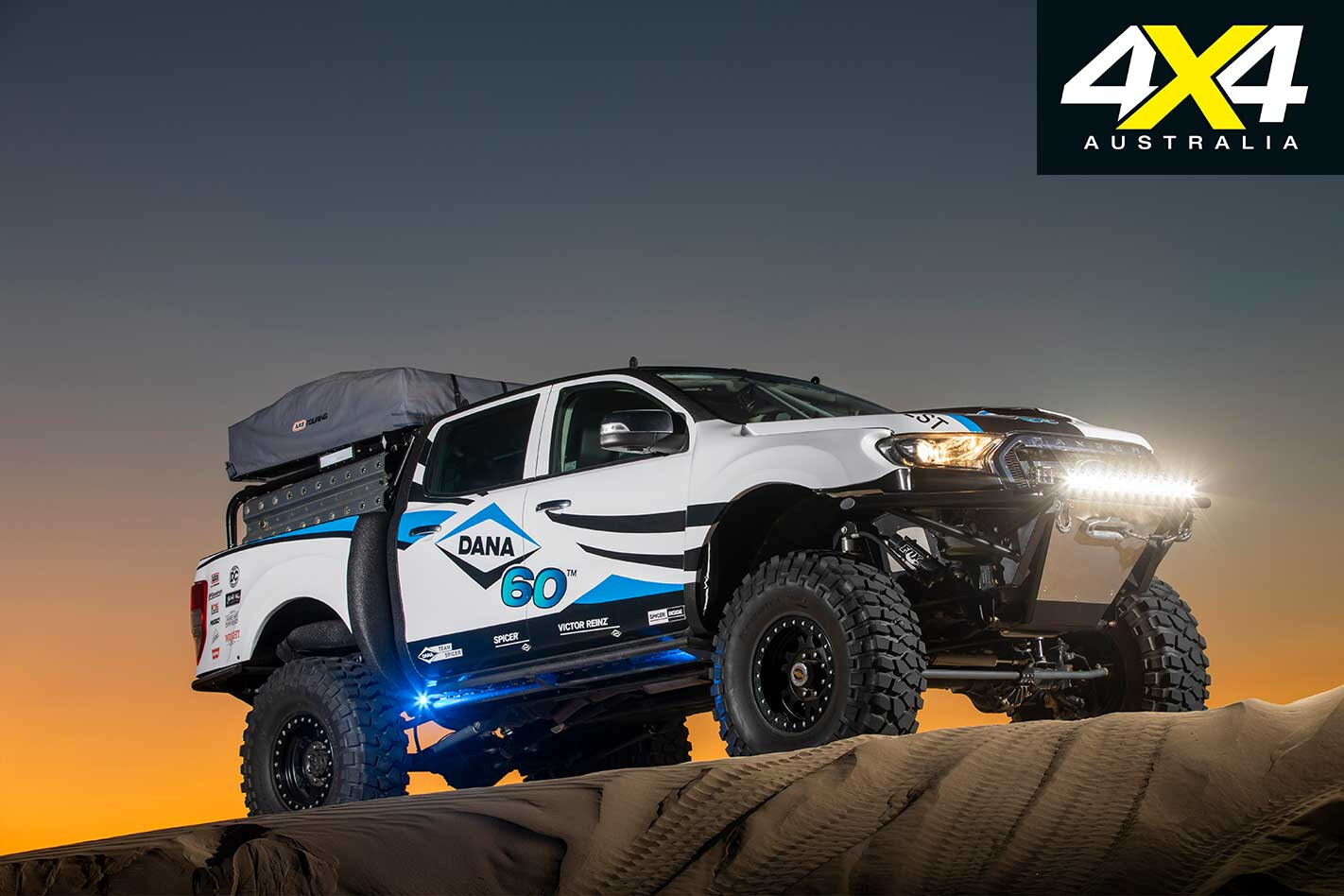
THE JEEP Wrangler is without a doubt the most easily modified 4×4 on the planet, bar none. Right off the shelf there’s everything available for it from replacement axles, wider guards, bolt-in cages and 400 different storage systems. It’s like Lego for grown-ups, and all because of a huge aftermarket support in the USA. That’s why this Ranger is one of the most important 4x4s we’ve featured in a long time.
As manufacturers move to global platforms, the aftermarket industry will begin booming. From desert-racing suspension from the States through to overlanding setups from the remote regions of Eastern Europe, there’s never been a more exciting time to build or use a 4×4. Dana hinted at a full suite of upgrades available for the Ford Ranger as of next year, so it seems dual-cab utes are about to get a whole lot more exciting.

